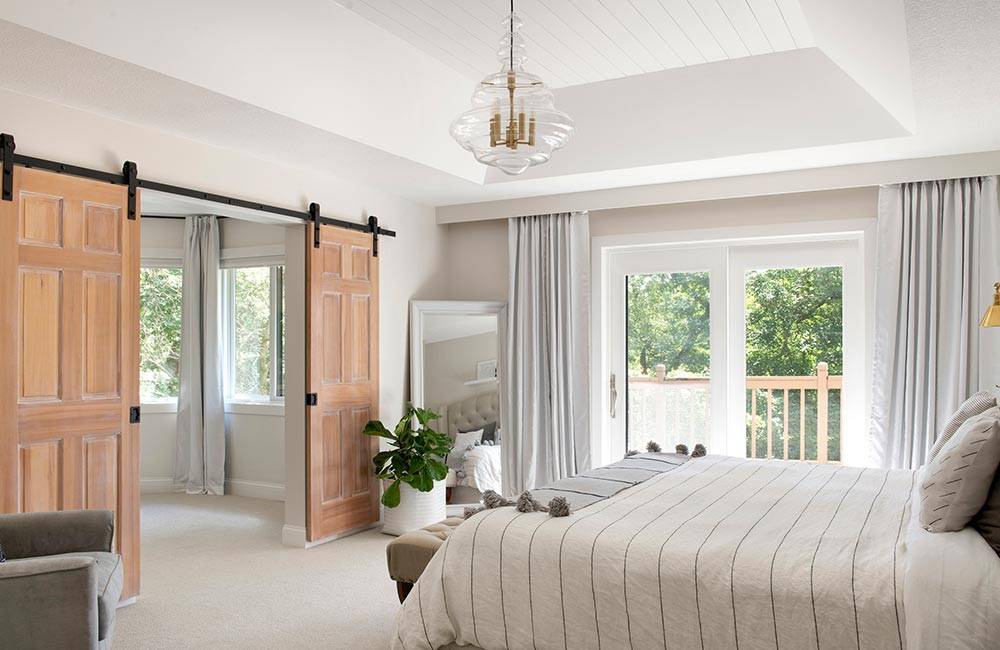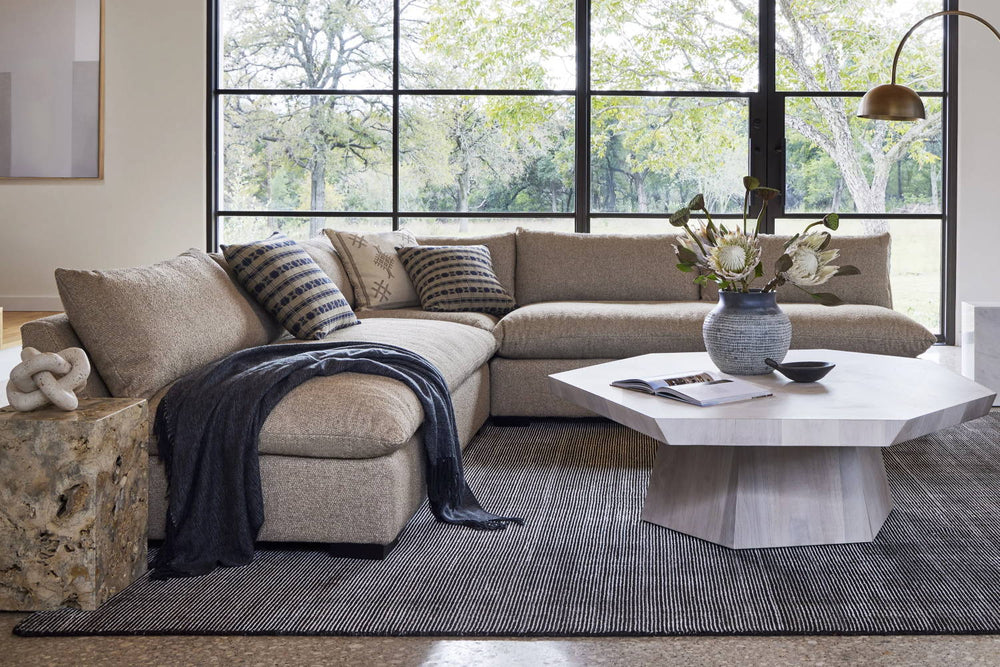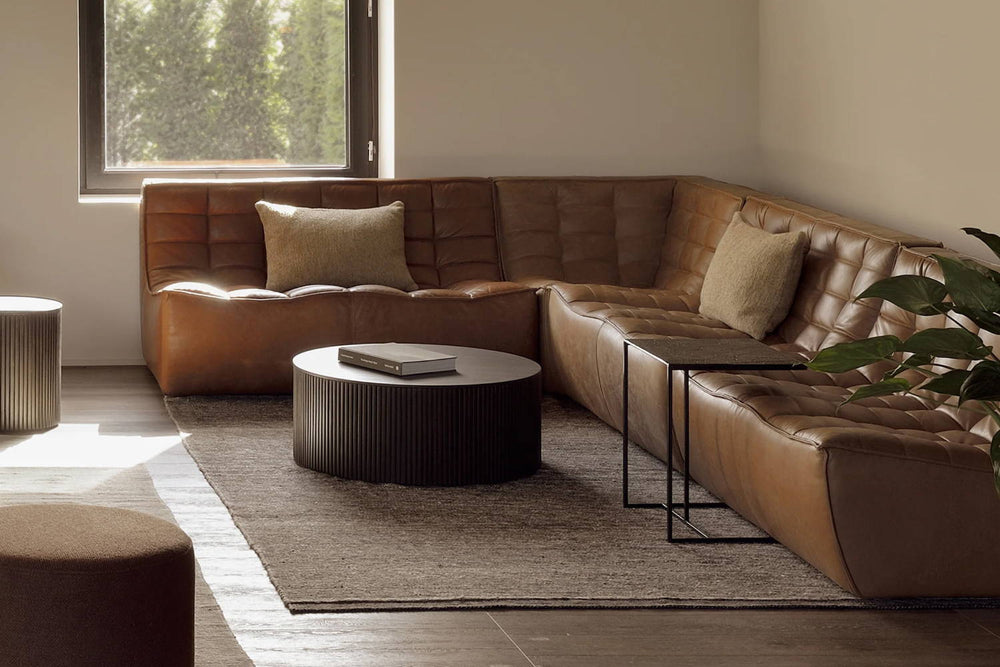Paden Dining Table by Four Hands
Whether you’re in the process of furnishing your contemporary dining room or contemplating an upgrade to your current dining table, one of the crucial factors to consider is the width of the dining table. The dimensions play a pivotal role in determining the comfort and functionality of your dining space. In this guide, we'll delve into the various aspects of modern dining table width, exploring standard dimensions, seating arrangements, and key considerations to help you make an informed decision. Let’s review the dimensions that shape our dining spaces and discover how the width of a dining table plays a pivotal role in creating a harmonious and inviting environment for shared moments and memorable feasts.
Post Dining Table by Ferm Living
Standard Width Measurements for Dining Tables
Dining tables come in various widths to cater to different needs and preferences. Standard width measurements for dining tables typically range between 28 inches (71 cm) to 40 inches (102 cm). However, it's important to note that these are general guidelines, and specific widths can vary based on the design, style, and purpose of the dining table.
Here is a breakdown of common dining table width categories:
- Narrow Tables (28-32 inches / 71-81 cm): Ideal for small dining spaces or breakfast nooks, narrow tables maximize seating while conserving space
- Standard Tables (36-40 inches / 91-102 cm): The most common width range for dining tables, offering a balance between space efficiency and comfortable seating for a typical family
- Wide Tables (42 inches and above / 107 cm+): Suited for larger dining rooms or for those who frequently entertain, wide tables provide ample space for elaborate table settings and generous seating arrangements
Remember, the choice of width depends on factors such as the available space, the number of people you want to accommodate, and your personal aesthetic preferences. Always consider the dimensions of your dining area and the intended use of the table when making a selection.
Silver Extendable Dining Table by House of Finn Juhl
Dining Table Seating Capacity Size & Correlation
The seating capacity of a dining table is closely correlated with its size, including both length and width. The relationship between these factors is crucial in ensuring a comfortable and functional dining experience. Here's a breakdown of the correlation between dining table seating capacity and size:
Length and Seating Capacity:
- Small Tables (4-6 feet): Typically accommodate 2 to 4 people. These tables are ideal for small households or intimate settings
- Medium Tables (6-8 feet): Can comfortably seat 6 to 8 individuals. This size is common for standard family dining
- Large Tables (8 feet and above): Suitable for larger gatherings and events, providing seating for 8 or more people
Width and Seating Capacity:
- Narrow Tables (28-32 inches): Commonly seat 2 to 4 people. Ideal for small spaces or intimate dining
- Standard Tables (36-40 inches): Offer a balanced seating capacity of 6 to 8 people, suitable for most households
- Wide Tables (42 inches and above): Provide ample space and can comfortably seat 8 or more individuals, making them suitable for larger gatherings
Combined Length and Width:
- Rectangular Tables: The most common shape, with lengths ranging from 5 to 9 feet or more. The width complements the length to determine the overall seating capacity
- Square Tables: Generally range from 3 to 5 feet on each side, accommodating 2 to 8 people depending on size
- Round Tables: Vary in diameter, with smaller ones seating 2 to 4 and larger ones accommodating 6 to 10 or more
It's essential to consider both the length and width together to determine the overall size and seating capacity that aligns with your needs. Additionally, factors such as legroom, space for table settings, and the room layout should be considered for a well-balanced dining setup.
Bibianna Dining Table by Four Hands
Other Dining Table Considerations
In addition to size and seating capacity, several other considerations play a crucial role in choosing the perfect dining table for your space and lifestyle. Here are some key factors to keep in mind:
Shape:
- Rectangular Tables: Classic and versatile, suitable for most dining spaces
- Round Tables: Promote conversation and work well in smaller spaces.
- Square Tables: A modern choice that can be space-efficient and visually appealing
Material:
- Wood: Traditional and durable, with various finishes and styles
- Glass: Creates a sleek and contemporary look, visually expanding the space
- Metal: Modern and industrial, often used in combination with other materials
Style:
- Traditional: Features classic designs and ornate details
- Scandinavian: Emphasizes clean lines and minimalistic aesthetics warmed by natural materials
- Mid-Century: Geometric shapes are softened with clean lines and angled legs
Height:
- Standard Height (30 inches): Most common for dining tables
- Counter Height (36 inches): Higher tables suitable for casual dining or kitchen use
- Bar Height (42 inches): Tall tables often used with bar stools
Room Layout:
- Ensure the table fits comfortably within the dining space, allowing for proper circulation and room for designer buffets or sideboards and high-end dining chairs
- A general rule of thumb is to allow 24 inches of space per seat at the dining table. This ensures adequate elbow room and comfort for each diner
By considering these factors alongside size and seating capacity, you can make an informed decision that aligns with your preferences, lifestyle, and the aesthetics of your dining area.
Double Extendable Dining Table by Ethnicraft
The width of a dining table emerges as a key element that goes beyond mere measurements. As we've navigated through the diverse world of dining tables, from compact designs fostering intimacy to expansive tables encouraging grand gatherings, it becomes evident that width is not just a dimension; it's a design choice that shapes the very essence of our dining spaces. Ultimately, the journey through the width of dining tables invites us to consider the unique needs and preferences that define our dining experiences. As you embark on the quest for the perfect dining table, may your newfound understanding empower you to curate spaces that resonate with warmth, connection, and the joy of shared meals around a table that perfectly suits your lifestyle.








